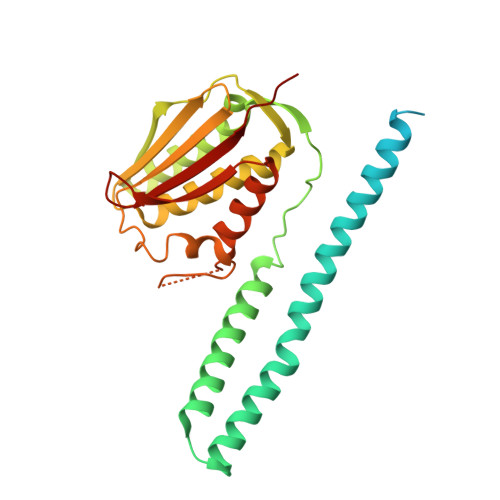Segmental Helical Motions and Dynamical Asymmetry Modulate Histidine Kinase Autophosphorylation.
Mechaly, A.E., Sassoon, N., Betton, J.M., Alzari, P.M.(2014) PLoS Biol 12: 1776
- PubMed: 24492262
- DOI: https://doi.org/10.1371/journal.pbio.1001776
- Primary Citation of Related Structures:
4BIU, 4BIV, 4BIW, 4BIX, 4BIY, 4CB0 - PubMed Abstract:
Histidine kinases (HKs) are dimeric receptors that participate in most adaptive responses to environmental changes in prokaryotes. Although it is well established that stimulus perception triggers autophosphorylation in many HKs, little is known on how the input signal propagates through the HAMP domain to control the transient interaction between the histidine-containing and ATP-binding domains during the catalytic reaction. Here we report crystal structures of the full cytoplasmic region of CpxA, a prototypical HK involved in Escherichia coli response to envelope stress. The structural ensemble, which includes the Michaelis complex, unveils HK activation as a highly dynamic process, in which HAMP modulates the segmental mobility of the central HK α-helices to promote a strong conformational and dynamical asymmetry that characterizes the kinase-active state. A mechanical model based on our structural and biochemical data provides insights into HAMP-mediated signal transduction, the autophosphorylation reaction mechanism, and the symmetry-dependent control of HK kinase/phosphatase functional states.
Organizational Affiliation:
Institut Pasteur, Unité de Microbiologie Structurale and CNRS UMR 3528, Paris, France.
















